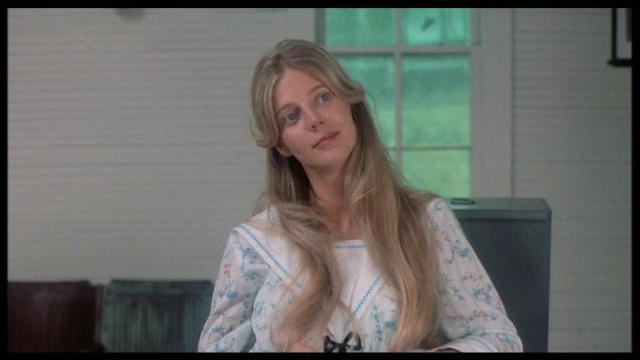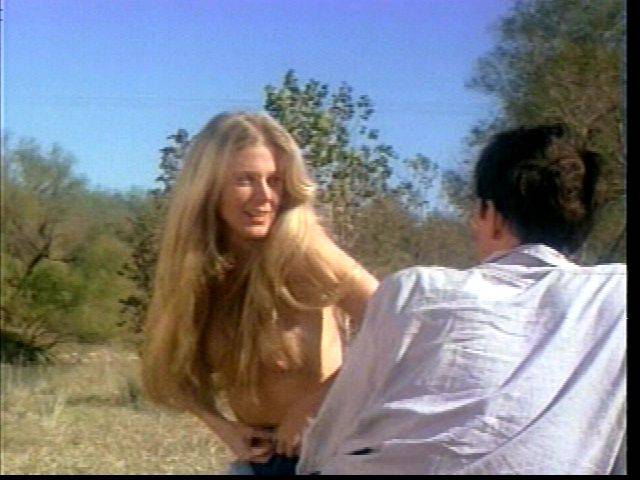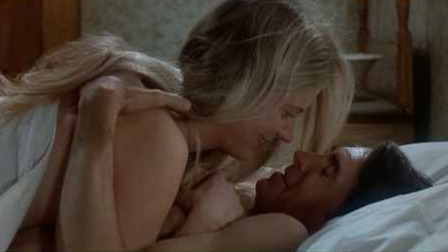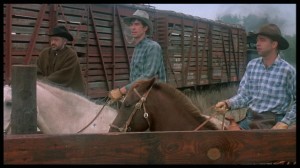From Monthly Film Bulletin, May 1975 (Vol. 42, No. 496). Blythe Danner was a classmate of mine at Bard College, where I had the privilege of seeing what a gifted actress she already was (I remember especially her performance of one of the lead roles in Jean Genet’s The Maids) and the pleasure of accompanying her once or twice on the piano when she performed as a jazz singer (in particular, on “‘Round Midnight”). — J.R.
Lovin’ Molly
U.SA., 1973Director: Sidney Lumet
Bastrop, Texas. The lives of three characters, narrated by each in
turn. 1925, Gid (Anthony Perkins): Gid and Johnny (Beau Bridges)
are friends whocompete for the favors of Molly (Blythe Danner),
who likes themboth. When Gidproposes to Molly, she replies
that she’d rather have sex with him for its own sake, not as part
of a marriage contract, and invites himto join her in a nude swim,
but he refuses. She goes to a dance with Eddie (Conrad Fowkes),
another local boy, and Johnny picks a fight with him. Gid sleeps
with her for the first time, and is shocked to discover she isn’t a
virgin. On a train to the Panhandle to sell his father’s cattle, Gid
attacks Johnny for sleeping with Molly and not proposing to her, but
then discovers that Eddie slept with her first. After the cattle is sold,
Johnny decides to work away from home. Molly’s father dies and
Gid comforts her; one day he learns that she’s married Eddie, and he
eventually decides to marry Sarah (Susan Sarandon), another local
girl. Gid’s father (Edward Binns) dies, leaving him the farm. When
Eddie is away, Molly tells Gid she wants to have her first child by
him, a secret that only they and the child will know. Johnny comes
home. 1945, Molly: Matt, her first son, and Joe, her second (fathered
by Johnny), are away at the war, and Gid continues to see her;
Eddie has been killed in an oil rig accident. Joe is reported dead
and Matt writes Molly that he is ashamed to be her bastard son;
she burns the letter and doesn’t tell Gid about it. Still influenced
by his strait-laced upbringing, Gid announces that he can’t go on
sleeping with her. She continues to see Johnny; Gid brings her
a puppy to raise. 1964, Johnny: Johnny visits Gid in the hospital;
the latter has become a hard-working and rather stoical farmer
like his father. After returning home andrepairing his windmill,
he has a heart attack; he says he wants to move in with Molly,
but dies before Johnny can drive him to the hospital. Johnny
proposes to Molly; she refuses, but says she’ll continue to love him
and sleep with him.
On the face of it, Lovin’ Molly appears to be working with
hopeless material, hopelessly attenuated — in structure (if not in
theme) a kind of rural Carnal Knowledge, with the lives of three
characters split into discrete and isolated episodes from which the
physical fact of their environment is virtually stripped away. (The
film was shot on location, but for all that Sidney Lumet makes of the
terrain, he might as well have used a sound stage.) To compound
difficulties, we have three evidently urban actors out to impersonate
country folk, with the delivery of a new-born calf by Perkins and
Danner clearly faked through tricky cutting, and comparable
evidence of straining after verisimilitude and continuity all along the
way. And yet, with the odds stacked so firmly against it, the film gets
away with a lot more than one would have any right to expect. At his
best, Lumet has always been an actor’s director, and the cumulative
impact of the three leads often persuades one to forget the quaint
precocity of the material with which they are working. The ambiguity
of the title — whether one regards the first word as an adjective or a
gerund — reflects the two ways one might regard the story, as the
portrait of a free and generous woman or as an account of the
separate ways her two lovers learn to appreciate her. Either way,
Blythe Danner has a natural way of turning cliché into conviction that
keeps the wispy myth of the plot going, emerging as a sort of ageless
and unaffected symbol of boundless love, while Perkins and Bridges
impress mainly through their ability to show the transformations
of age, Apart from this very professional trio, the principal sense one
has of an authorial presence derives from the relationships of the
story and milieu to those of Hud and The Last Picture Show, two
other impersonally directed adaptations of Larry McMurtry novels.
[2012 note: This film was adapted from McMurty’s Leaving
Cheyenne by Stephen Friedman.] One feels the McMurtry
influence here for better and for worse: negatively, in the rather
sappy portrayal of the patriarch-sage dispensing rustic pearls
of wisdom (with Edward Binns assuming the Melvyn Douglas/
Ben Johnson part); more positively, in the unforced sweetness
and goodness of the characters within their acknowledged
limitations, persisting like stable parts of the scenery over
four decades of a mundane existence.
JONATHAN ROSENBAUM






